Author: Brett A. Hill
Since its foundation New York has always been a beacon to the world and as the city has developed over the centuries it has become one of the world’s truly great cities. New York represents many things to many different people; it is the financial capital of the world, a cultural capital famed for Broadway and the city also serves as the home to the United Nations. For centuries it has drawn people from around the world who have made New York a truly international city and a global leader. That position of global leadership is now extending to leadership in the fight against climate change. A city, famed for its skyscrapers and iconic buildings, is undergoing a revolution that will see it eventually become one of the most energy efficient cities in the world.
The New York Green Building Boom
Passive House buildings have begun to pop up all over the city, from the borough of Brooklyn to Manhattan itself, the number of realised projects is increasing year on year. This green building boom is being encouraged not only by the city of New York, but by the forward thinking State Government, whose policies have encouraged a boom in energy efficient building state wide. New York Passive House, the peak body for Passive House professionals in the state, provides an interactive map that shows the impressive number of Passive House buildings, either completed or under construction, located in the five boroughs of New York City. When a building is completed and certified the owners have the opportunity to list the building in the international Passive House building database, where over 4,600 buildings from around the world are already listed. The international Passive House building database is a crucial resource for demonstrating what is possible at the frontiers of Passive House building design.
The NAPHN Conference
New York is known for its diversity and this is also reflected in the type of Passive House projects that have been realised in the city. Small social housing projects in Brooklyn, large residential and commercial buildings, restored brown stones, these are just some of the diverse projects that have been developed in the past decade. On June 27-28 the international Passive House community will gather at the North American Passive House Network (NAPHN) conference in New York City to talk about the future of Passive House development, not just for New York City, but worldwide. The annual NAPHN conference is one of the premier events for North American practitioners in energy efficient building design and this year’s conference will feature tours of some incredibly interesting Passive House projects in and around the city.
Energy Efficient Student Housing
One of the most impressive projects in the city is “The House at Cornell Tech”, a student and faculty housing building for Cornell University. The House once held the record for the tallest Passive House building in the world, but such is the rate of Passive House development worldwide that its record has already been eclipsed. Despite losing its record The House represents a beacon project that has demonstrated what is possible when it comes to large Passive House buildings and it has inspired many similar projects around the world, including in Vancouver where a Passive House building explosion is taking place. The House contains accommodation for 500 people, as well as non-residential spaces, and it demonstrates ability of Passive House design and construction techniques to realise even the most complex of projects.
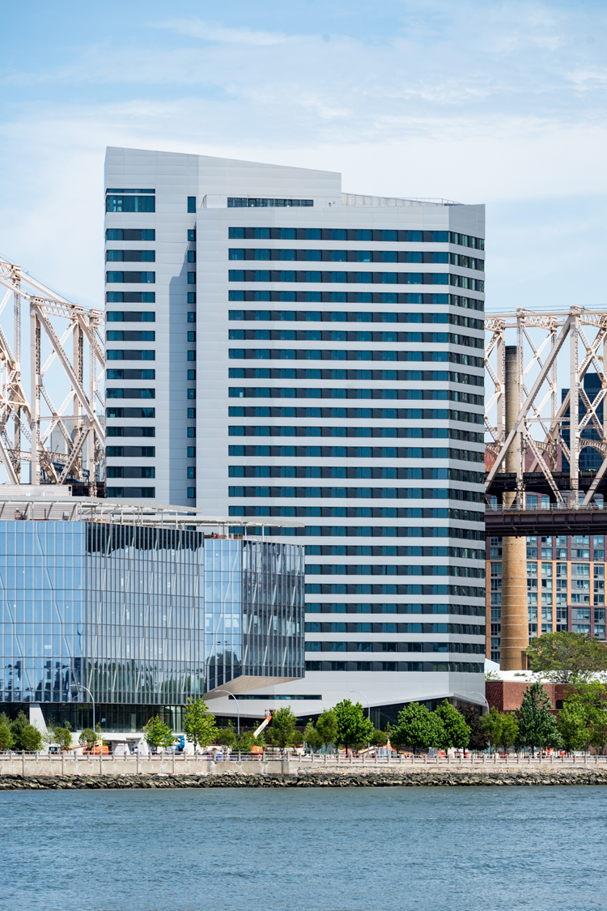
An Energy Efficient Brownstone?
The evidence in the borough of Brooklyn shows that Passive House is not only for new buildings. In Brooklyn, an ever increasing number of homes have been retrofit to Passive House’s EnerPHit standard, demonstrating that even old and historic buildings can do their bit to fight climate change. The Brooklyn Heights townhouse by Baxt Ingui Architects is a beautiful example of the type of energy efficient renovation which can be achieved with a period home. The older a building is, generally the less an energy efficient the building is and with New York being home to many historically significant (and protected) buildings it is important to be able to slash the energy consumption of these buildings to help meet the city’s ambitious climate goals. Projects, such as the Brooklyn Heights townhouse, demonstrate that there is no need to compromise the historic character of a building when undertaking an energy efficient retrofit and more and more homes are being renovated to achieve the EnerPHit standard and slash their energy consumption. Reductions in energy consumption and greenhouse gasses are a primary concern of an EnerPHit retrofit, but the other significant benefit of such a renovation is the improved interior comfort and air quality. Often older homes, particularly pre-war, can be drafty and suffer from mould and poor indoor air quality, but after a Passive House retrofit these buildings no longer suffer from these conditions. An improvement in indoor air quality and the elimination of mould problems, can have a material impact upon the health of the building’s occupants and this is just another of the pleasant side effects of ‘Going Green’ with Passive House.
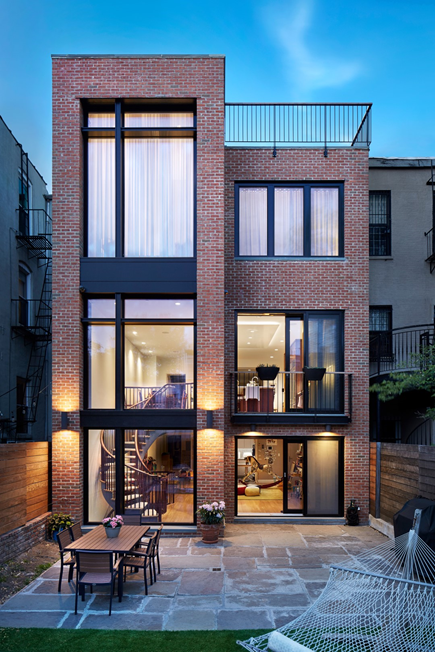
Sendero Verde: The Community of the Future
As more and more projects have been completed in New York City, the momentum for energy efficient Passive House buildings has grown at an exponential rate. Along with an increase in the number of projects, perhaps the most inspiring change has been the scale of projects now under development. One of the new ‘super projects’ is Sendero Verde, located in East Harlem. The Sendero Verde project was awarded under New York City’s SustainNYC program, which seeks to create affordable residences without compromising on design quality. Sendero Verde will create an entire community for its new residents which will include the tallest Passive House building in the world (at 37 storeys high), a school, supermarket and 4 community gardens. This complete community will bring 655 affordable and sustainable apartments to the East Harlem community and demonstrate how Passive House buildings are ideal for social housing projects.
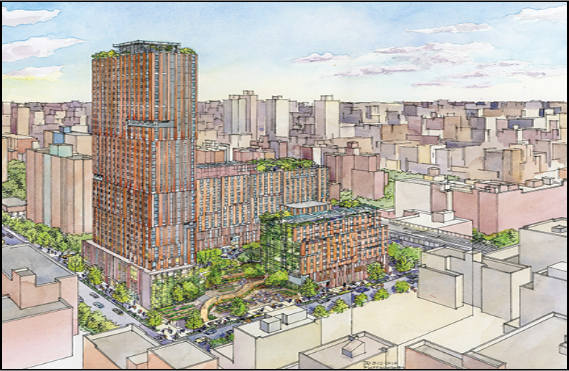
The Green New Deal and Passive House
Sendero Verde will not be the first Passive House social housing project in New York City, however, with many already built or due for completion. In fact affordable Passive House residential projects have been in the headlines lately with freshman Congresswoman Alexandra Ocasio-Cortez discussing a local social housing Passive House residential project at a town hall meeting in her congressional district recently. Congresswoman Ocasio-Cortez told her constituents that the not-for-profit development contains 67 affordable housing units for seniors, including “20-30% of those units were reserved for seniors who were formerly homeless”. Congresswoman Ocasio-Cortez is a champion of the Green New Deal and a major proponent of immediate action to tackle climate change, and she acknowledged in her town hall discussion the benefits of Passive House buildings in addressing the environmental concerns we all now have to face.
A Global Building Revolution
The global Passive House industry has developed at a stunningly rapid rate in the past ten years, with New York City playing a large part in inspiring developments around the globe. It was architects and engineers from New York City who developed the first EnerPHit retrofit in Asia (Sri Lanka) and The House at Cornell Tech has inspired buildings from Bilbao, Spain to Vancouver, Canada. This trend of climate leadership is set to continue with the announcement in the past week of an ambitious state wide plan to all but eliminate greenhouse gas emissions by 2050. As the New York Times reported, the ambitious Climate Leadership and Community Protection Act would “require the state to slash its planet-warming pollution 85 percent below 1990 levels, and offset the remaining 15 percent, possibly through measures to remove carbon dioxide from the atmosphere”. If the state of New York reaches these goals it will have effectively created a net-zero economy. Such lofty climate mitigation plans are necessary according to the work of the Intergovernmental Panel on Climate Change (IPCC), where energy efficiency and Passive House buildings are identified as key technological planks in reaching these goals and preventing the worst case global warming scenarios.
In May of this year the European Passive House Conference was held in Heidelberg, Germany, a city that is now as much famed for its ground breaking Passive House district, as it is for its historic Castle. The Bahnstadt district of Heidelberg is an urban renewal project that mandates that all of the buildings must meet the Passive House standard. The district is nearing full completion, already housing over 3000 residents, and also features a Passive House school, kindergarten, community centre and even the world’s first Passive House cinema complex. During the European Passive House conference attendees were able to tour this impressive district and learn first-hand from the experts who realised this project. The International Passive House Association (iPHA) takes a key role in these types of technical exchanges, allowing members from all around the world to exchange ideas and learn from exemplary projects. iPHA represents thousands of Passive House practitioners, enthusiasts and experts from across the globe and undertakes a variety of activities to further the development of Passive House buildings worldwide, ranging from the International Passive House Open Days, to educational events and the direct lobbying of governments.
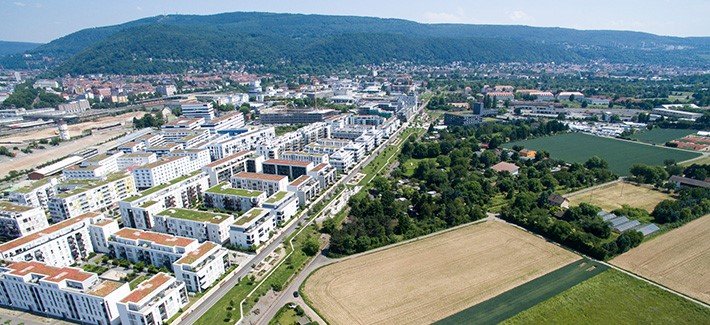
China: The Passive House Giant Awakes
The 23rd International Passive House Conference, to be held in October, 2019 in Gaobeidian, China, is another event which will bring into sharp focus just how rapid the uptake of Passive House construction is worldwide. The Bahnstadt of Heidelberg is currently the largest Passive House district in the world, but it will soon lose its title to the Gaobeidian Bahnstadt, a new development, approximately one hour from Beijing. The size of the Gaobeidian Bahnstadt is immense, with the first stage alone comprising some 3000 apartments. The second and third stages of this mega project will see the total area of Passive House buildings swell to some one million square metres. Gaobeidian Bahnstadt is an immense undertaking, but it only represents one of the many large projects currently under construction in China, where the challenges laid down by cities like New York and Heidelberg have been truly embraced. Currently China is leading the way when it comes to the size and scale of Passive House construction, with cities like Chengdu (200,000 m2), Taizhou (110,000 m2) and Qingdao (100,000 m2) undertaking large Passive House districts to bring the virtues of energy efficient living to thousands of their residents. Chinese construction and manufacturing firms have also embraced energy efficient design and are now certifying many building materials and systems to the Passive House standard, allowing many building projects to be completed with locally sourced products. One of these companies, Windoor City, will be joint host of this year’s International Passive House Conference, where attendees will be invited to tour the amazing projects currently under construction.
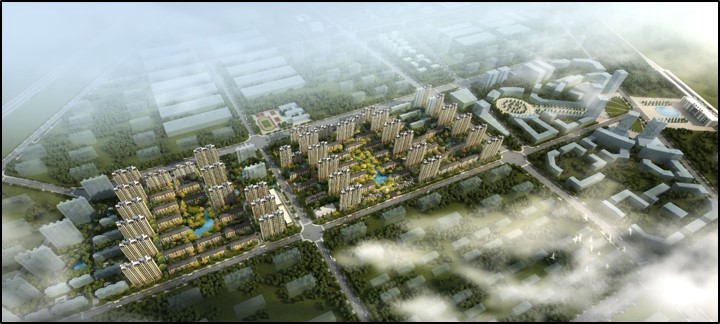
The Race to Zero
Over the past century the world has witnessed the both the nuclear arms race and the race for space, but what if the next great competition between nations was The Race to Zero? Since the Paris climate accords of 2016 the world has begun to put into action the initiatives that are needed to avert catastrophic climate change. Cities, states and nations are proposing ever bolder climate change initiatives in this accelerating race to be the first region to achieve the goal of net zero emissions. From New York State, to Vancouver, Gaobeidian and even Abu Dhabi, the pace of action is increasing and ever more bold proposals and plans are being presented. There is no doubt that energy efficient buildings are a necessary step in all of these plans and the need for Passive House buildings will only grow in decades ahead, as the world attempts to avert a climate catastrophe. The Race to Zero has finally begun, with the undoubted winners being the planet and all of us who inhabit it.
The North American Passive House Conference will be held on June 27-28 in New York City, more information about the event can be found at the website: https://naphnconference.com/
The 23rd International Passive House Conference will be held October 9-11 in Gaobeidian, China. For more information please visit the conference website.
Passive House Open Days are occurring worldwide on 28-30 June, and again in November and you can find out how to visit a Passive House here.






 Carl supports our international communication activities and is the point of contact for administrative enquiries.
Carl supports our international communication activities and is the point of contact for administrative enquiries.